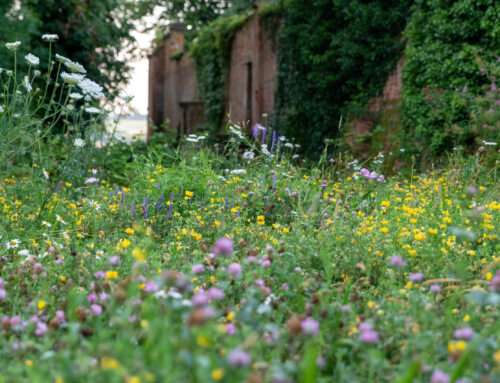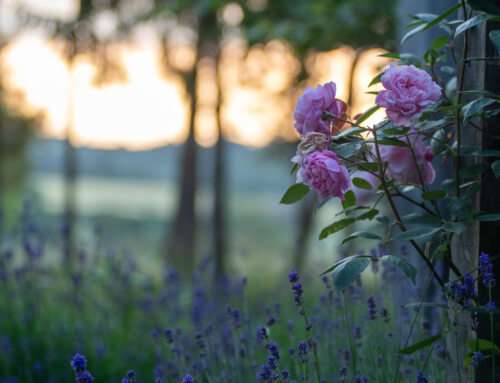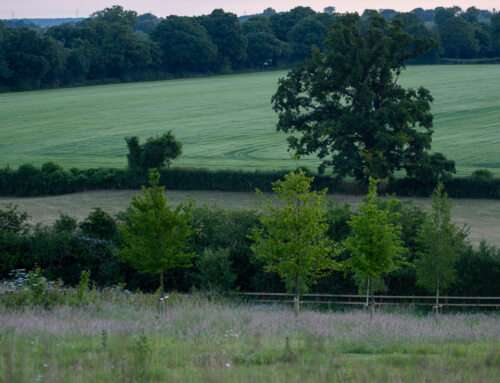The Art of Topiary
Topiary is the shaping of shrubs or trees into ornamental shapes. Many of us will have formed our first impressions of topiary through visits to historic buildings. You may have come away with memories of tiny box hedges with gravel in between or avenues of clipped hedges leading the eye to a victory column. Hedges might be clipped into buttresses, finials or turrets – all seeking to prove their mastery over nature. The design principle is sound – the garden became green architecture, the symmetry and repetition reflecting that of the baroque architecture of the house. Yet it can feel a little lacking in soul.
All gardening is a conscious attempt to mould nature into a form that is satisfying to the eye. A rambling chaotic cottage garden may seem naturalistic, yet we have chosen what species to put where and have probably introduced a host of non-native or highly bred plant species into the palette.

By Jared Hutchings, Garden Designer
At Nicholsons, we like to blend the effects. We might deliberately place neatly clipped topiary directly next to a plant with a completely different form and texture to create a pleasing effect. Within a flower bed, consider putting a neatly clipped dome of dark green yew next to the untamed stems of Gaura, the wiggly wands of Sanguisorba, the umbrella-like flowers of Achillea or the firmly upright stems of Salvia. Keep the topiary regular to provide rhythm but if you have the room, avoid putting them in a straight line. The perennials give us a sense of colour and season. Like any evergreen plant, the topiary provides structure, especially in winter.
Topiary works well in courtyard gardens where hard surfaces need softening. Where a courtyard has a formal layout, low hedges might define a small seating area with a bistro table and domes and cones might punctuate the corners of a bed. Lollipop trees (standards) can be placed to frame entrances or at the edges of a terrace to provide height.
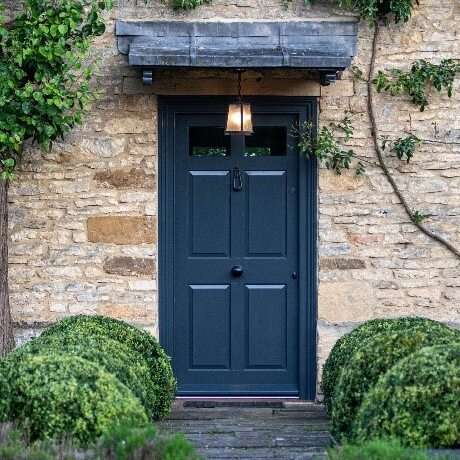
Roof form trees can be placed in a geometric arrangement, underplanted with ground cover plants – these could shade dining areas or as architectural pieces in themselves. To create an informal ambience, mix topiary and plants with a more relaxed feel in the same way as described above.
If you have a meadow or a lawn area that you are eager to turn wild, another trick is to grow large domes of topiary in meadows – the waving stems and fluffy heads of the grass contrasting with the architectural forms of the topiary. Evergreens, like yew, work just as well as deciduous forms like hornbeam. Dotting them around in a seemingly random fashion creates a sense of spontaneity and fun.

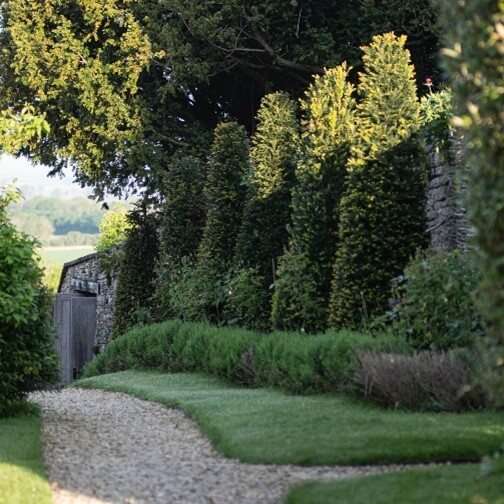
In ‘Arts and Crafts’ gardens, the Victorians would divide their gardens into rooms using neatly clipped hedges. This acted as a foil for all manner of manicured chaos in flower beds at the front. A tree overhanging a clipped hedge provides a subtle textural contrast. Clipped hedges can also mark a transition to wilder areas like orchards, a potager or meadows – a much softer marker than a wall. Topiary can mark other transitions – a matching pair at the bottom and top of steps, or at the crossing of two paths; even a clipped arch in a hedge that separates two areas.
For closely clipped topiary, box used to be ideal, but we no longer recommend it because of the twin scourges of box blight and box caterpillar. For small leaves, we would recommend yew (Taxus baccata), small-leaved privet (Ligustrum delavayanum), or Euonymus japonicus. For larger pieces, Portuguese laurel and Osmanthus work well as evergreen, and of course, there is beech and hornbeam, the latter being more resilient.
If there is one drawback to this use of topiary, it would be cost. A 50cm high topiary ball of yew must spend a lot more time being looked after in a nursery than a 50cm yew hedge plant. One route is to select an evergreen with a natural architectural habit. For small plants, many Hebes (veronicas) have a natural pin cushion shape. Try Hebe sutherlandii or Hebe topiara for very small grey-green leaves or Hebe rakaiensis for white flowers and olive-green leaves. Growing to about a metre in a naturally round shape, try Pittosporum ‘Golf Ball’.

If you have time, you can create your own topiary balls and domes by grouping plants like Euonymus japonicus or Osmanthus x burkwoodi in a triangle and then clipping them into your desired shape.
Nicholsons stock a wide range of topiaries, as well as pleached trees, so if you need advice, drop in and speak with a member of our team in the Plant Centre.

